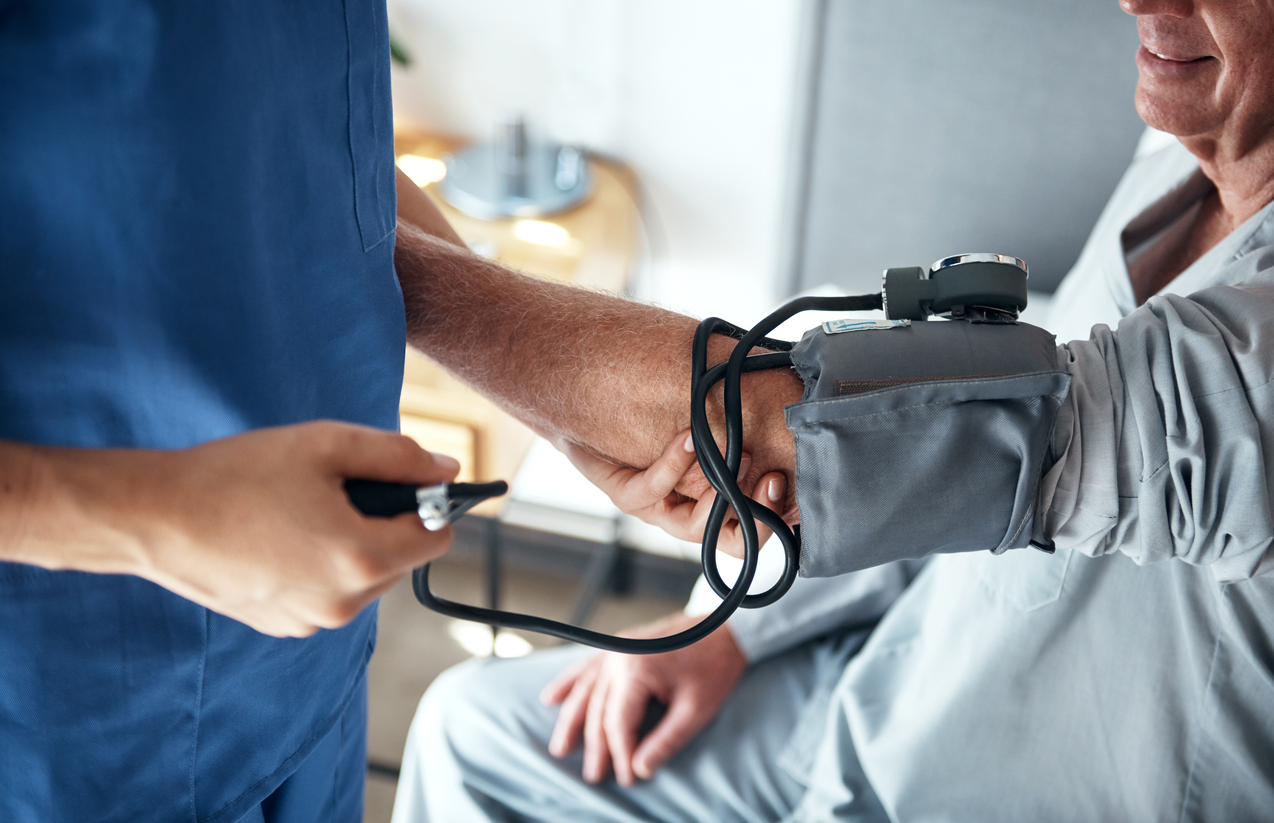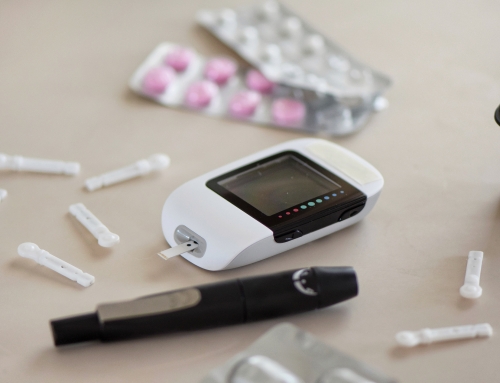By Dewayne Hasten, DPC Patient Ambassador, Hemodialysis Patient and Biomedical Engineer
Patient to Patient: Low Blood Pressure (Hypotension) During Dialysis Treatments
Protecting your access
You are a hemodialysis patient, and you know the score. You arrive at the clinic for your treatment and go right to the scale, weigh yourself, and head to your chair. There are the usual pleasantries, the questions about your health since your last treatment, and your vital signs are checked.
The nurse or technician then straps the blood pressure cuff on your arm and you hear the monitor start. You feel the cuff around your arm start to inflate. You think to yourself, “here we go again,” as you prepare for another treatment that will include more than 10 or 12 blood pressure readings over the next few hours. Always the same arm—your non-access arm; the only arm that you can freely use to hold your book or newspaper, the arm that aches afterward from so many squeezes. You wonder; why so many measures on the same arm? Why must this arm, too, be restrained by the blood pressure cuff?
The answer to the same arm question is easy: it is to protect your access. A fistula or graft can be harmed by the squeezing of the cuff (and we don’t want that). So, staff uses your other arm for all blood pressures. The answer as to why so many readings is a little more difficult. You know the process of standing, sitting, pre-treatment, and post-treatment blood pressures. But, you may wonder at times why so much attention is paid to blood pressure during dialysis. Well, all the fuss about blood pressures is largely to watch you for a problem called hypotension, or low blood pressure.
What to watch out for with low blood pressure
Blood pressure is one of the most commonly checked vital signs in all medical settings, but it is even more significant for you, as someone on dialysis. We all know the most common dangers of high blood pressure: stroke, heart attack, etc. In many patients, it is high blood pressure that prompted renal failure in the first place. For you, high blood pressure is still a concern, but it is the risk of low blood pressure during treatment that drives the frequent pressure measures.
Low blood pressure, hypotension, is rather common for dialysis patients. Although some patients rarely have the problem, others need constant attention to this life-threatening condition. I would like to share some information about hypotension with my fellow patients for two reasons. First, it is vital to understand the condition, its causes, and how to prevent it. And, more importantly, it is critical for you to know the symptoms so you can alert the staff early and get treatment quickly.
Symptoms of low blood pressure can vary. Some of the more common signs are dizziness, nausea, headaches, muscle cramps, and, in more severe cases, non-responsiveness, chest pain, and loss of consciousness.
You may have a drop in blood pressure at the very start of a treatment, or you may suffer a sudden drop later in the procedure. The cause may be the same: a decrease in the volume of fluid in the bloodstream. This reduced volume (called hypovolemia) is due to the fluid removed ruing the treatment.
The problem occurs because your body tries to maintain the balance of fluid between the bloodstream and your other tissues. Although the process is very complex, (involving electrolyte balance and chemistry), it can be simplified for our purposes. As fluid is pulled out of your blood through the dialyzer, the volume of fluid in your bloodstream starts to drop. Your body starts to transfer fluid from the tissue space into your bloodstream. During this process, you may suffer a drop in blood pressure if you don’t have enough fluid in the tissue space to transfer, or if the transfer can’t occur quickly enough.
The immediate treatment of low blood pressure usually involves raising your feet higher than your head, and giving you saline. Raising your feet above your head ensures that blood is routed to your heart and brain. The administration of saline adds fluid volume and an electrolyte to offset the fluid shifting that is taking place. The added fluid and electrolyte will raise your blood pressure and reduce the symptoms of hypotension. In most cases, these measures are enough to correct the problem; in some cases a trip to the hospital may be needed.
Hypovolemia and hypotension are serious complications that can occur during dialysis, and you need to be aware of these conditions as well as the symptoms that suggest that your blood pressure may be dropping during your treatments.
Tips to avoid blood pressure drops
Here are a few basic guidelines to minimize your risk of hypotension during treatment:
- Follow Your Diet: Your doctor and dietitian have taught you and designed a diet for you, based on your dialysis treatment. Your diet helps you control sodium, potassium, and other essential electrolytes that your body uses to maintain fluid balance. Carefully following your diet will help you reduce your chances of hypotension during treatment.
- Monitor Fluid Intake: It is very important to keep your fluid intake between treatments at levels prescribed by your doctor. Adding too much fluid between treatments means that more fluid must be removed during each treatment to reach your dry weight. Removing more fluid increases the rate at which the fluid is pulled out of your bloodstream, (the ultrafiltration rate or UFR), which can increase your risk for hypovolemia and hypotension during treatment.
- Consult Your Doctor About Your Medication Schedules: Many dialysis patients take prescription drugs to control blood pressure. You need to carefully follow the medication schedule your doctor prescribes at all times. Also; it is a good idea to talk with your doctor about when to take your medications on dialysis versus non-dialysis days. He or she may suggest that you take your medication at different times on dialysis days, or that you hold some medications before treatment on your dialysis days. This is especially true if you have proven to be more susceptible to falling blood pressure during your treatments.
Although this is a rather limited discussion of a complex issue, I hope I have conveyed the importance of hypotension as it relates to you. Knowing what hypotension is, why it happens, how it is treated, how you can minimize your risk of hypotension, and, most importantly, how to know when it may be happening are key. Blood pressure monitors in dialysis clinics are great tools, but they only check your pressure at regular intervals or when the staff manually activates them. Knowing how to recognize the symptoms and alert the staff can help reduce the effects of hypotension and perhaps even keep your pressures from dropping to dangerously low levels. I have also taken this chance to give you some very basic guidelines to lower your risk for low blood pressure during your treatments in the hope that your awareness will help you avoid this potentially life-threatening condition.




